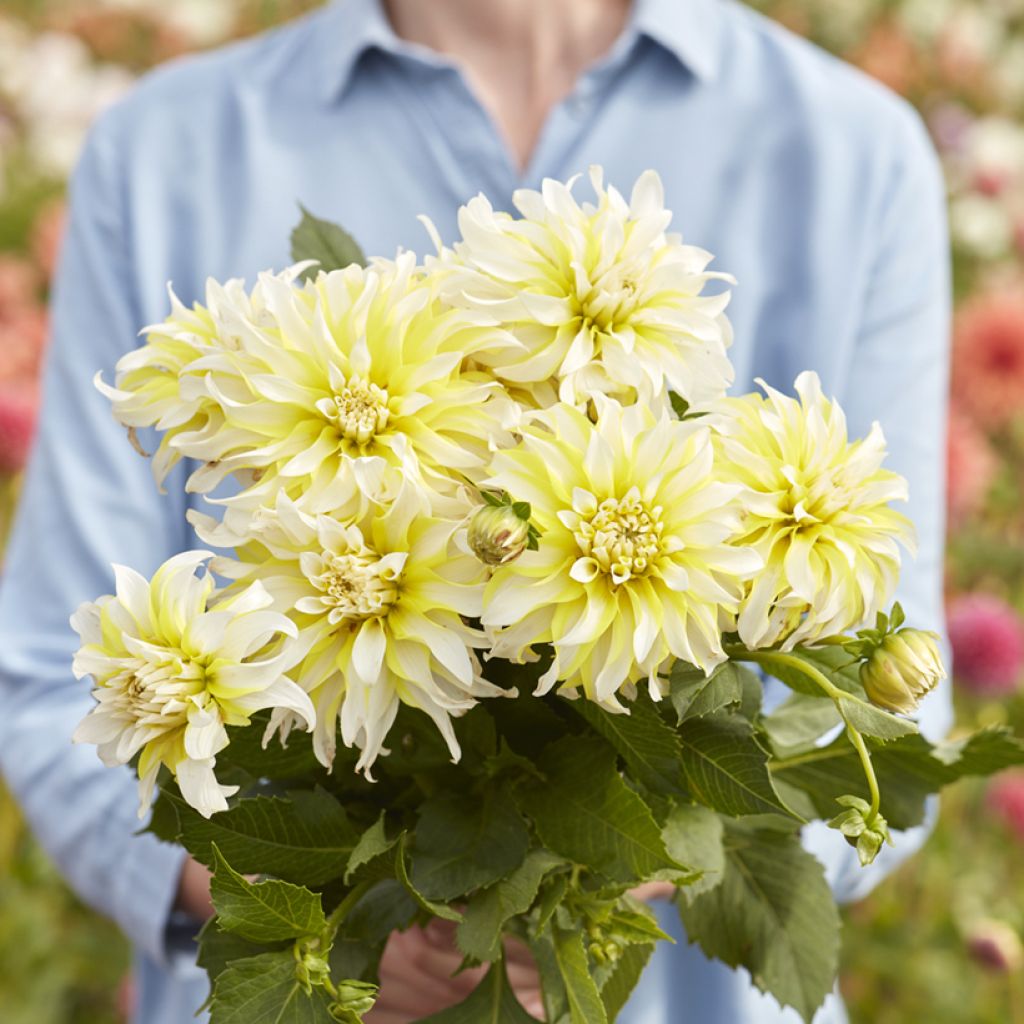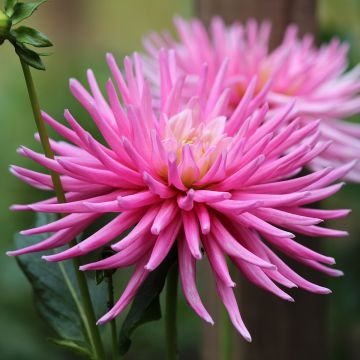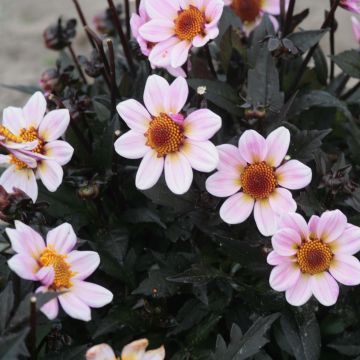

Dahlia Calgary Flames
Dahlia Calgary Flames
Dahlia Calgary Flames
Special offer!
Receive a €20 voucher for any order over €90 (excluding delivery costs, credit notes, and plastic-free options)!
1- Add your favorite plants to your cart.
2- Once you have reached €90, confirm your order (you can even choose the delivery date!).
3- As soon as your order is shipped, you will receive an email containing your voucher code, valid for 3 months (90 days).
Your voucher is unique and can only be used once, for any order with a minimum value of €20, excluding delivery costs.
Can be combined with other current offers, non-divisible and non-refundable.
Home or relay delivery (depending on size and destination)
Schedule delivery date,
and select date in basket
This plant carries a 6 months recovery warranty
More information
We guarantee the quality of our plants for a full growing cycle, and will replace at our expense any plant that fails to recover under normal climatic and planting conditions.
Would this plant suit my garden?
Set up your Plantfit profile →
Description
The Decorative Dahlia 'Calgary Flames' does not leave anyone indifferent with its twisted small yellow and white flowers. They resemble small kermesse windmills. It is a rather compact and well-branched variety that is perfect for large borders and container growing. Its radiant, abundant, and prolonged flowering allows for creating cheerful bouquets.
The Dahlias are tuberous plants belonging to the aster family. They originate from frost-sensitive botanical species native to the high plateaus of Mexico. There are thousands of horticultural varieties, and numerous novelties are created each year. Dahlias are classified based on the shape of their flowers. 'Calgary Flames', registered in the Netherlands in 2023, is classified in the Decorative Dahlias category, and in the subcategory of decorative dahlias with small flowers. In this horticultural group, the coloured ligules (or "petals") of the head are arranged regularly in a spiral, they can be curved towards the stem or even frilled, for example. In 'Calgary Flames', each head measures 12 cm in diameter and its ligules are tapered, more or less tubular, spiralled, and twisted, partly curved downwards. They are white, coloured vivid lemon yellow at the base, with a white reverse. The flowering period extends from July to October-November. The plant, forming an erect clump, will reach an average height of 90 cm, and 50 to 60 cm in width. The stems are hollow and branched, the leaves are divided into 3 or 5 leaflets, which form very denticulate lobes. The leaves and stems are of a fairly dark green colour. To encourage flower reblooming and extend the flowering period, make sure to remove faded flowers and make bouquets!
To complement the spirited Dahlia 'Calgary Flames', choose plants in pastel or silvery tones, such as 'Richard Gray' lavenders or 'Silver' Helichrysum petiolare, which will enhance its vibrant colours. Erigeron karvinskianus or gauras with their airy flowering will bring movement and delicate texture to balance the dahlia's sturdier structure. Add some grasses like 'Bronze Form' carex comans for a touch of lightness and dynamism.
Dahlias, emblematic of cottage gardens, are remarkable flowers that brighten up borders with their vibrant colours. Although perfect in flower beds, they can also add a decorative touch to the vegetable garden. In Mexico, these tuberous plants were originally cultivated for their edible roots, but their limited culinary interest quickly relegated them to ornamental plants. Since then, their generous beauty and spectacular flowering continue to charm generations of gardeners.
Plant habit
Flowering
Foliage
Botanical data
Dahlia
Calgary Flames
Asteraceae
Cultivar or hybrid
Other Ornamental Dahlias
View all →Planting and care
The Dahlia 'Calgary Flames' is easy to grow in all regions. For a generous flowering, it is good to respect a few simple rules, plant the tubers in a sunny location as soon as the last frosts are over, rich, fresh and well-drained soils are perfect. However, stagnant moisture would promote tuber rot. Feel free to amend the soil with compost and sand if necessary. Work the soil deeply and enrich it, for example, with crushed horn or dehydrated blood. Place your tuber and crumble the soil well to refill without air pockets. Your dahlia should be covered with about 6 cm of soil. At the end of planting, water once abundantly and then renew this watering regularly during the first 6 weeks to help with rooting.
Dahlias are sensitive to cold, they need to be overwintered. In November, the first frosts blacken the foliage, it is time to dig them up. Carefully unearth the tubers. Remove as much soil as possible. Let the foliage dry so that the tubers can replenish their reserves. Then cut the stems to 10 cm. Spread your bulbs in a box on newspaper. Store them frost-free in a dry, cool, dark place, such as a frost-free garage or attic. In southern regions, close to the coast, experiencing few frost days per year, it is possible to leave them in place. In this case, simply cover the ground with a mat of leaves or straw for protection.
This Dahlia, with its hollow stems, is still sensitive to strong winds or heavy rains. To overcome this drawback, you can stake it, but let's agree, it's not very aesthetic. However, by pinching the stems early or removing axial flower buds, you will spread out the habit of the plant which will offer more resistance to bad weather. At the same time, you channel the flow of sap to a single flower that will become larger and sturdier.
Planting period
Intended location
Care
Planting & care advice
This item has not been reviewed yet - be the first to leave a review about it.
Similar products
Haven't found what you were looking for?
Hardiness is the lowest winter temperature a plant can endure without suffering serious damage or even dying. However, hardiness is affected by location (a sheltered area, such as a patio), protection (winter cover) and soil type (hardiness is improved by well-drained soil).

Photo Sharing Terms & Conditions
In order to encourage gardeners to interact and share their experiences, Promesse de fleurs offers various media enabling content to be uploaded onto its Site - in particular via the ‘Photo sharing’ module.
The User agrees to refrain from:
- Posting any content that is illegal, prejudicial, insulting, racist, inciteful to hatred, revisionist, contrary to public decency, that infringes on privacy or on the privacy rights of third parties, in particular the publicity rights of persons and goods, intellectual property rights, or the right to privacy.
- Submitting content on behalf of a third party;
- Impersonate the identity of a third party and/or publish any personal information about a third party;
In general, the User undertakes to refrain from any unethical behaviour.
All Content (in particular text, comments, files, images, photos, videos, creative works, etc.), which may be subject to property or intellectual property rights, image or other private rights, shall remain the property of the User, subject to the limited rights granted by the terms of the licence granted by Promesse de fleurs as stated below. Users are at liberty to publish or not to publish such Content on the Site, notably via the ‘Photo Sharing’ facility, and accept that this Content shall be made public and freely accessible, notably on the Internet.
Users further acknowledge, undertake to have ,and guarantee that they hold all necessary rights and permissions to publish such material on the Site, in particular with regard to the legislation in force pertaining to any privacy, property, intellectual property, image, or contractual rights, or rights of any other nature. By publishing such Content on the Site, Users acknowledge accepting full liability as publishers of the Content within the meaning of the law, and grant Promesse de fleurs, free of charge, an inclusive, worldwide licence for the said Content for the entire duration of its publication, including all reproduction, representation, up/downloading, displaying, performing, transmission, and storage rights.
Users also grant permission for their name to be linked to the Content and accept that this link may not always be made available.
By engaging in posting material, Users consent to their Content becoming automatically accessible on the Internet, in particular on other sites and/or blogs and/or web pages of the Promesse de fleurs site, including in particular social pages and the Promesse de fleurs catalogue.
Users may secure the removal of entrusted content free of charge by issuing a simple request via our contact form.
The flowering period indicated on our website applies to countries and regions located in USDA zone 8 (France, the United Kingdom, Ireland, the Netherlands, etc.)
It will vary according to where you live:
- In zones 9 to 10 (Italy, Spain, Greece, etc.), flowering will occur about 2 to 4 weeks earlier.
- In zones 6 to 7 (Germany, Poland, Slovenia, and lower mountainous regions), flowering will be delayed by 2 to 3 weeks.
- In zone 5 (Central Europe, Scandinavia), blooming will be delayed by 3 to 5 weeks.
In temperate climates, pruning of spring-flowering shrubs (forsythia, spireas, etc.) should be done just after flowering.
Pruning of summer-flowering shrubs (Indian Lilac, Perovskia, etc.) can be done in winter or spring.
In cold regions as well as with frost-sensitive plants, avoid pruning too early when severe frosts may still occur.
The planting period indicated on our website applies to countries and regions located in USDA zone 8 (France, United Kingdom, Ireland, Netherlands).
It will vary according to where you live:
- In Mediterranean zones (Marseille, Madrid, Milan, etc.), autumn and winter are the best planting periods.
- In continental zones (Strasbourg, Munich, Vienna, etc.), delay planting by 2 to 3 weeks in spring and bring it forward by 2 to 4 weeks in autumn.
- In mountainous regions (the Alps, Pyrenees, Carpathians, etc.), it is best to plant in late spring (May-June) or late summer (August-September).
The harvesting period indicated on our website applies to countries and regions in USDA zone 8 (France, England, Ireland, the Netherlands).
In colder areas (Scandinavia, Poland, Austria...) fruit and vegetable harvests are likely to be delayed by 3-4 weeks.
In warmer areas (Italy, Spain, Greece, etc.), harvesting will probably take place earlier, depending on weather conditions.
The sowing periods indicated on our website apply to countries and regions within USDA Zone 8 (France, UK, Ireland, Netherlands).
In colder areas (Scandinavia, Poland, Austria...), delay any outdoor sowing by 3-4 weeks, or sow under glass.
In warmer climes (Italy, Spain, Greece, etc.), bring outdoor sowing forward by a few weeks.























































